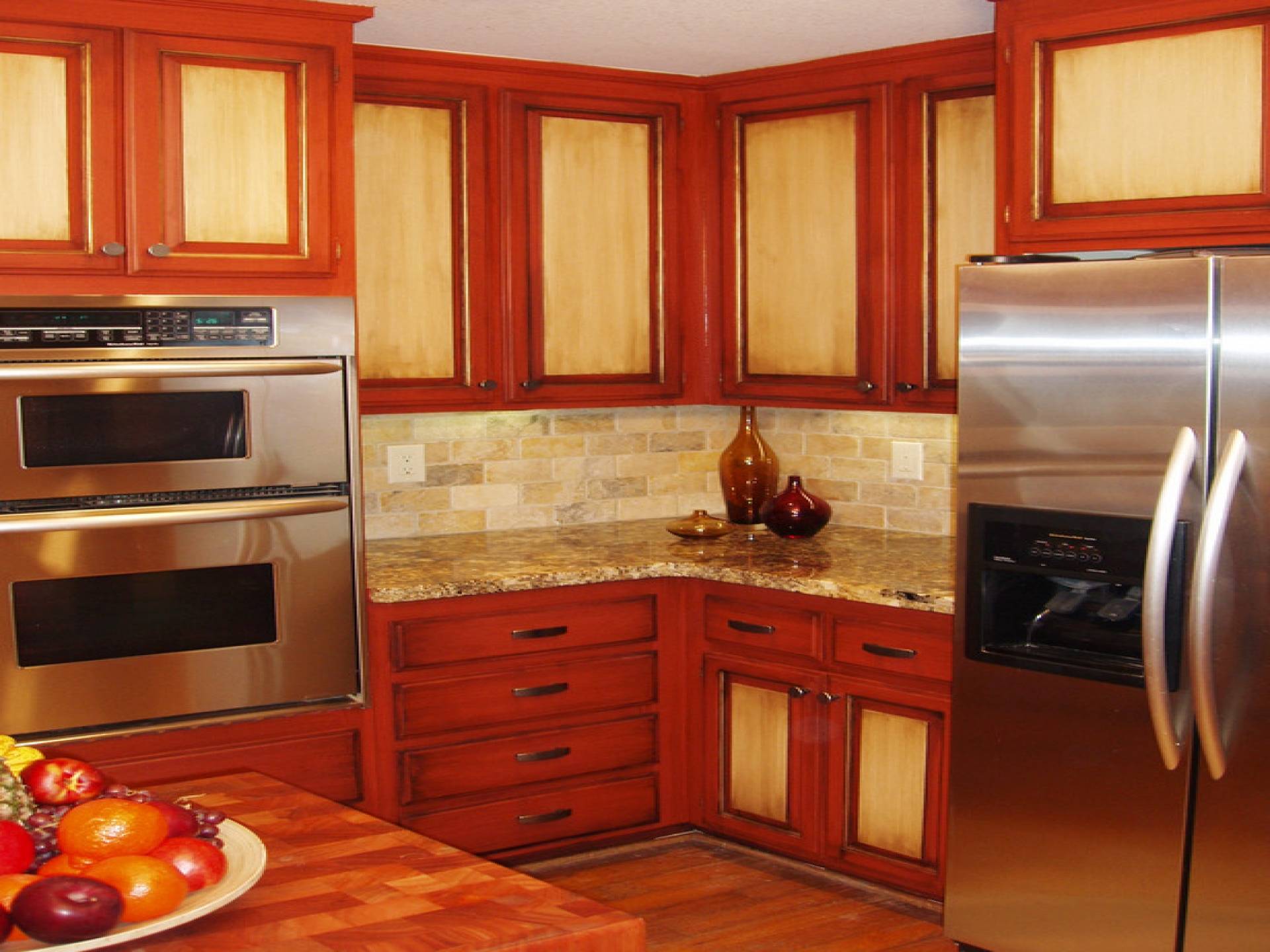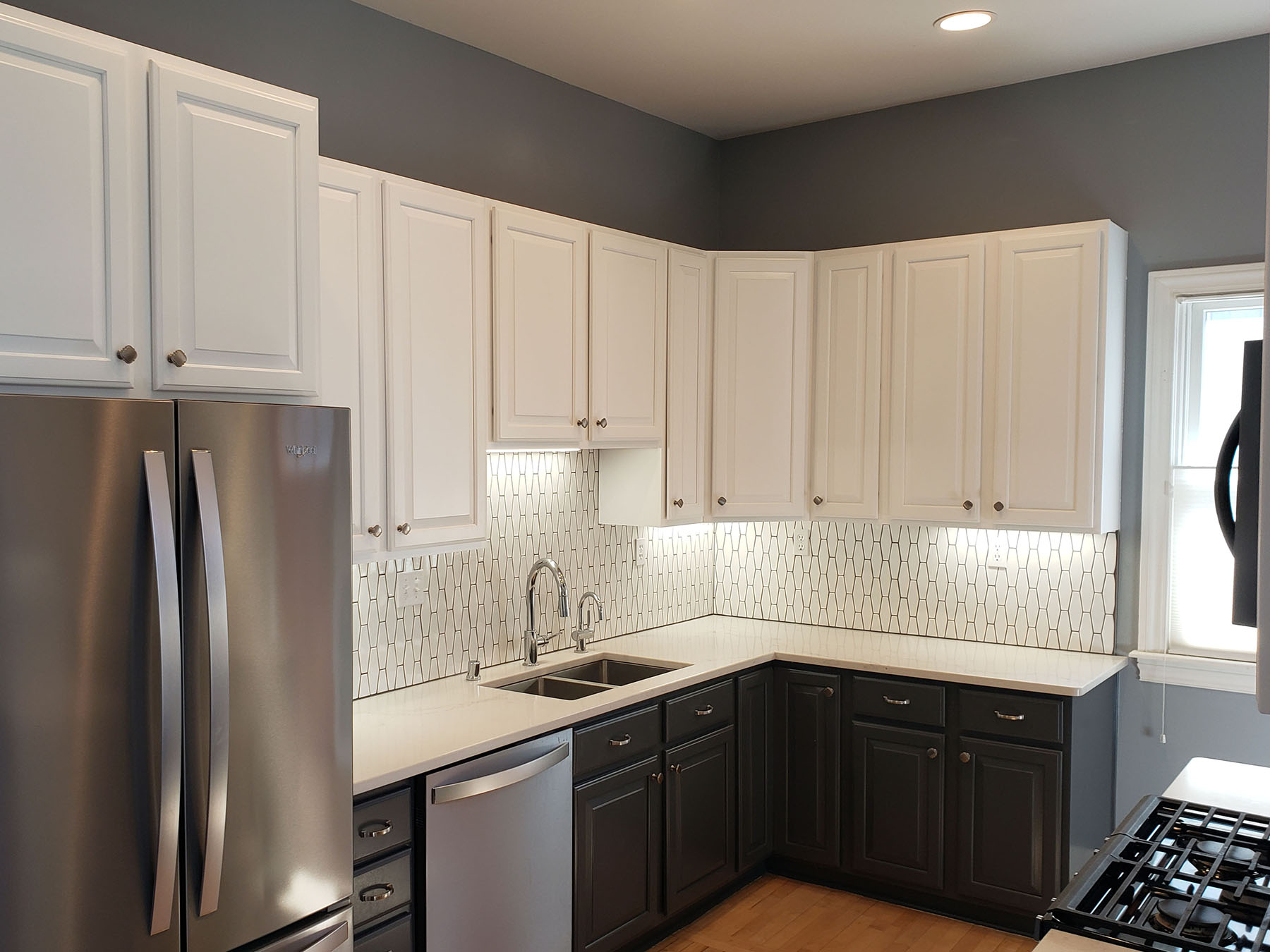Hamilton Kitchen Cabinet Painting Services: Kitchen Cabinet Painting Hamilton

Transforming your kitchen’s look and feel starts with your cabinets. A fresh coat of paint can dramatically update the space, adding value and style without the hefty price tag of a full remodel. Hamilton offers a range of services to meet every need and budget, from DIY options to professional painting companies. Let’s explore your options.
Reputable Kitchen Cabinet Painting Companies in Hamilton, Kitchen cabinet painting hamilton
Choosing the right painter is crucial for a successful project. Here are five reputable companies offering kitchen cabinet painting services in Hamilton, along with their estimated price ranges and services. Note that prices can vary depending on the size of your kitchen, the type of paint used, and the level of preparation required.
| Company Name | Services Offered | Price Range (Estimate) | Contact Information (Example) |
|---|---|---|---|
| Company A | Cabinet Refinishing, Painting, Staining | $3,000 – $6,000 | (555) 123-4567 |
| Company B | Cabinet Painting, Door Replacement, Hardware Installation | $2,500 – $5,000 | (555) 987-6543 |
| Company C | Cabinet Painting, Spray Painting, Custom Color Matching | $3,500 – $7,000 | (555) 555-5555 |
| Company D | Cabinet Painting, Refinishing, Minor Repairs | $2,000 – $4,500 | (555) 111-2222 |
| Company E | Full Kitchen Refacing, Including Cabinet Painting | $4,000 – $8,000 | (555) 333-4444 |
Professional Kitchen Cabinet Painting Process
Professional painters follow a meticulous process to ensure a high-quality, long-lasting finish. This process typically involves several key steps.
Kitchen cabinet painting hamilton – The steps involved in professional cabinet painting guarantee a superior result compared to DIY attempts. Careful attention to detail at each stage ensures the paint adheres properly and the final finish is smooth and durable.
- Preparation: This includes cleaning the cabinets thoroughly, removing hardware, sanding to create a smooth surface, and filling any imperfections.
- Priming: Applying a primer ensures better paint adhesion and creates a uniform base for the topcoat.
- Painting: Multiple coats of paint are applied, allowing each coat to dry completely before applying the next.
- Finishing: This may involve sanding between coats, applying a clear coat for protection, and reinstalling hardware.
- Clean-up: Thorough cleaning of the work area is essential to leave the kitchen spotless.
Professional vs. DIY Kitchen Cabinet Painting
Weighing the pros and cons of each approach helps homeowners make informed decisions. Cost, time commitment, and the desired level of quality all play a role in the decision-making process.
| Professional Painting | DIY Painting |
|---|---|
| Pros: High-quality finish, professional expertise, time-saving, warranty, less cleanup | Pros: Cost-effective, creative control, personal satisfaction |
| Cons: Higher cost, less control over the process, scheduling challenges | Cons: Time-consuming, potential for imperfections, requires skill and tools, extensive cleanup |
Sample Marketing Brochure Design
A visually appealing brochure can effectively showcase your services.
This sample brochure design uses high-quality images and concise descriptions to attract potential clients. The use of before-and-after photos emphasizes the transformative power of professional cabinet painting.
Brochure Cover: The cover features a large, high-resolution image: A before-and-after photo showcasing a transformation from dated oak cabinets to sleek, modern white. The text “Hamilton’s Premier Kitchen Cabinet Painting” is prominently displayed in a clean, modern font.
Inside Left Panel: This panel features several smaller before-and-after photos, showcasing a variety of cabinet styles and colors. Short, impactful captions highlight the transformations. A brief description of the company’s services and commitment to quality is included. A small company logo is placed in the corner.
Inside Right Panel: This panel features a list of services, including cabinet painting, refinishing, staining, and hardware installation. A price list or range is provided, along with contact information and a website address. A customer testimonial is included to build trust.
Back Panel: The back panel features a large map showing the company’s service area within Hamilton. Contact information is repeated, along with a QR code linking to the company website. A small image of the company logo is also included.
Choosing Colors and Finishes for Kitchen Cabinets

Transforming your Hamilton kitchen begins with the perfect cabinet color and finish. The right choices can dramatically alter the feel and functionality of your space, impacting everything from its perceived size to its overall ambiance. Let’s explore the trending options and how to select the best fit for your home.
Popular Kitchen Cabinet Colors and Finishes in Hamilton
Hamilton homeowners are embracing a diverse range of styles, reflecting both modern minimalism and classic elegance. The following table highlights some of the most popular color and finish combinations currently trending in the city.
| Color | Finish | Description |
|---|---|---|
| Classic White | Semi-Gloss | A timeless choice, semi-gloss white cabinets offer a clean, bright look that enhances natural light and makes the kitchen feel larger. The semi-gloss finish is durable and easy to clean, ideal for high-traffic areas. |
| Soft Gray | Matte | Soft gray cabinets, finished in a matte texture, create a sophisticated and calming atmosphere. This color works well in both modern and traditional kitchens, providing a neutral backdrop for colorful accents. The matte finish minimizes reflections. |
| Navy Blue | Satin | A bold and dramatic choice, navy blue cabinets add a touch of elegance and depth. A satin finish provides a subtle sheen, balancing durability with a less reflective surface than gloss. This works well in kitchens with ample natural light. |
Paint Finishes for Kitchen Cabinets
The choice of paint finish significantly impacts the look and practicality of your kitchen cabinets. Each finish offers unique advantages and disadvantages.
Consider these factors when making your selection:
- Matte: Offers a flat, non-reflective surface. Excellent for hiding imperfections but can be more challenging to clean and prone to showing fingerprints.
- Satin: Provides a slightly glossy finish with a soft sheen. More durable and easier to clean than matte, while still maintaining a relatively low-sheen look.
- Semi-Gloss: Offers a moderate sheen and excellent durability. Easy to clean and resistant to scratches and stains, making it ideal for high-traffic areas.
- Gloss: Highly reflective and durable. Provides a modern, sleek look but can highlight imperfections and show fingerprints more readily.
Impact of Light and Kitchen Layout on Color Choices
Natural light and kitchen layout are crucial factors to consider when selecting cabinet colors. Darker colors can make a small kitchen feel cramped, while lighter colors can create an illusion of spaciousness.
For example:
A small kitchen with limited natural light benefits from light-colored cabinets (e.g., white or cream) to maximize brightness and create an airy feel. Conversely, a large kitchen with abundant natural light can handle darker cabinets (e.g., navy blue or dark green) to add depth and drama without feeling oppressive.
Open-plan kitchens often benefit from coordinating cabinet colors with adjacent rooms to create a cohesive flow. A galley kitchen, on the other hand, might benefit from lighter colors to avoid making the space feel enclosed.
Hardware Styles to Complement Cabinet Colors and Finishes
The right hardware can elevate your kitchen’s design. Consider these pairings:
Classic White Cabinets (Semi-Gloss): Complement these cabinets with brushed nickel or polished chrome hardware for a clean, modern look. Alternatively, antique brass hardware adds a touch of vintage charm.
Soft Gray Cabinets (Matte): Matte black hardware provides a striking contrast against soft gray cabinets, creating a sophisticated and contemporary feel. Brushed gold hardware adds warmth and elegance.
Navy Blue Cabinets (Satin): Polished nickel or brushed gold hardware create a luxurious look against navy blue cabinets. For a more traditional style, consider oil-rubbed bronze hardware.
Preparation and Maintenance of Painted Kitchen Cabinets

Transforming your kitchen cabinets with a fresh coat of paint can dramatically enhance your space. However, achieving a long-lasting, professional finish requires meticulous preparation and ongoing maintenance. Proper preparation ensures the paint adheres well, while consistent care prevents damage and preserves the beauty of your newly painted cabinets. This section details the essential steps for achieving a stunning and durable result.
Preparing Kitchen Cabinets for Painting
Thorough preparation is paramount for a successful paint job. Skipping steps will almost certainly lead to a less-than-perfect finish. Take your time and follow these steps carefully for optimal results.
- Clean the Surfaces: Begin by thoroughly cleaning the cabinet surfaces. Use a degreasing cleaner, like TSP (trisodium phosphate), to remove grease, grime, and any existing finishes. Rinse thoroughly with clean water and allow to dry completely. This step is crucial for paint adhesion.
- Sanding: Once dry, lightly sand the cabinet surfaces using fine-grit sandpaper (180-220 grit). This step creates a slightly rough surface, improving paint adhesion. Focus on smoothing out any imperfections and removing any remaining residue from the cleaning process. Avoid aggressive sanding, as this can damage the cabinet’s wood.
- Fill Imperfections: Use wood filler to repair any dents, scratches, or holes. Allow the filler to dry completely and then sand it smooth, ensuring a seamless transition with the surrounding surface. This step is vital for a professional-looking finish.
- Prime the Cabinets: Apply a high-quality primer designed for cabinets. A primer seals the wood, prevents bleed-through from stains or knots, and provides a better surface for the paint to adhere to. Apply thin, even coats, allowing each coat to dry completely before applying the next.
Common Problems and Prevention During Kitchen Cabinet Painting
Several issues can arise during the painting process. Understanding these potential problems and implementing preventative measures will ensure a smoother and more successful project.
- Chipping: Insufficient preparation (cleaning, sanding, priming) is the most common cause of chipping. Ensure proper surface preparation and apply multiple thin coats of paint for better durability.
- Peeling: Peeling often results from applying paint to a dirty or greasy surface. Thorough cleaning and the use of a high-quality primer are essential to prevent this.
- Uneven Finish: Uneven application of paint or using low-quality paint can lead to an uneven finish. Apply thin, even coats using a high-quality brush or roller and allow ample drying time between coats.
- Brush Strokes: Visible brush strokes often indicate using too much paint or not blending properly. Use a high-quality brush or roller, apply thin coats, and use smooth, even strokes.
Cleaning and Maintaining Painted Kitchen Cabinets
Regular cleaning and maintenance are essential to preserve the beauty and longevity of your painted kitchen cabinets. Following these simple steps will keep your cabinets looking their best for years to come.
- Regular Cleaning: Wipe down your cabinets weekly with a damp microfiber cloth to remove dust and light spills. Avoid harsh chemicals or abrasive cleaners.
- Spot Cleaning: For tougher stains, use a mild dish soap solution and a soft sponge or cloth. Gently scrub the affected area and rinse thoroughly with clean water. Always test any cleaning solution in an inconspicuous area first.
- Avoid Harsh Chemicals: Avoid using harsh chemicals, abrasive cleaners, or scouring pads, as these can damage the paint finish.
- Protect from Moisture: Prevent excessive moisture buildup by ensuring proper ventilation in your kitchen. Immediately wipe up any spills to prevent water damage.
